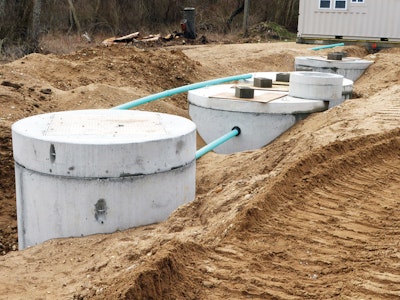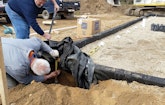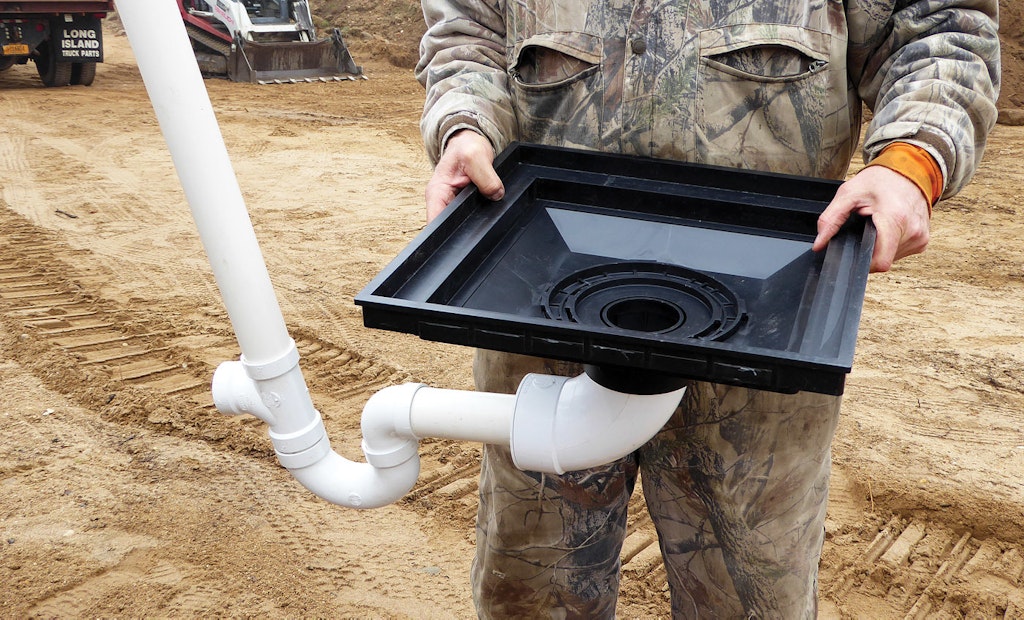With its extensive history of settlement, Long Island, New York, also has a lengthy history with cesspools. Nitrogen pollution is now pushing local officials to declare an end to cesspool use, and the next issue is what can replace them.
One solution is a constructed wetland like the pilot project conducted at Sylvester Manor on Shelter Island near Long Island’s northeastern tip. The manor has a history almost as long as the island itself and now may be pointing a way toward its onsite future.
The manor started in 1652 as a plantation to supply provisions for the sugar trade with Barbados. Today, after 10 generations in one family, the manor has been gifted to the nonprofit Sylvester Manor Educational Farm. It has shrunk to a 240-acre farm dedicated to promoting sustainable agriculture and educating people about the connections between land and food. This focus on the future made it a natural place to showcase wastewater solutions.
Good timing
“We came along with the desire to adopt a wastewater alternative at the same time the county was looking for a site to construct a pilot project wetland,” says Sara Gordon, the farm’s planning and conservation consultant.
That was the fall of 2014, and the farm staff was moving its worker kitchen and restrooms to temporary structures on the property to reduce the impact of the resident farm staff on the old manor house. The system went into operation in 2017.
Funding came from the Suffolk County Water Quality Protection and Restoration Program, a Community Capital Assistance Program grant from the state, an education grant from the Long Island Community Foundation, and donations from the community.
Sylvester Manor staff teamed up with Natural Systems Utilities in Hillsborough, New Jersey, to design the project as well as manage construction and startup.
The system
Water leaves the restrooms in a 4-inch pipe and empties into the first of two 2,500-gallon concrete septic tanks connected in series and spaced about 6 feet apart. Tanks were supplied by Coastal Pipeline Products from Calverton, New York.
Kitchen waste runs first through a 1,500-gallon tank that serves as a grease trap before flowing into the first septic tank.
The two tanks are the simplest pretreatment possible to begin reducing BOD, says Mike Zavoda, P.E., one of the Natural Systems Utilities engineers who designed the system.
On the way out of the second tank, effluent passes through a Polylok filter before heading into a 3,000-gallon recirculation tank. A pair of Goulds Water Technology, a Xylem brand, pumps controlled by IFS panels from SJE-Rhombus push effluent through about 12 feet of 2-inch schedule 40 PVC lines to the constructed wetland bed that is 14 by 30 by 5 feet deep.
“Basically we built an old-fashioned swimming pool, but used a pond liner instead of vinyl,” says Ed Bennett, a construction manager for Natural Systems Utilities.
The bed started with a plywood form to provide rough dimensions. The inside was lined with Firestone Building Products PondGard. It’s an EPDM rubber just like the rubber used on flat roofs but without the added algicides and fungicides. Filter fabric between the liner and the plywood provided some cushion to protect the liner.
Penetrations of the liner for pipes were sealed using the liner manufacturer’s recommended system of pipe flashings, adhesives, and clamps, Bennett says.
At the bottom of the bed is 18 inches of 1-inch-diameter gravel. On top is about 2 1/2 feet of 3/8-inch-diameter pea gravel. On top of that are low-profile Infiltrator Water Technologies chambers, and inside are the laterals. There are 10 laterals, fed from a manifold and built with 2-inch Schedule 40 PVC. Chambers are covered with about 2 inches of pea gravel and topped with about 6 inches of mulch.
At the bottom of the bed, a 4-inch perforated pipe collects water flowing through the system and carries it to a 6-foot-diameter tank. This has a float so operators can control the depth of water in the wetland and maintain an anoxic zone for some denitrification.
An Orenco Systems recirculation ball valve controls whether water flows back through the wetland or on to three leaching chambers about 40 feet downslope from the wetland. The chambers are concrete, 10 feet in diameter, 16 feet deep, and with open bottoms so treated water can disperse into the soil.
Given the sandy soils on the island, the leach pits take up much less room than a typical drainfield and are as effective, Zavoda says.
Although the bed was built a couple of feet above grade, finish work included grading soil so there is a continuous gentle slope to the top of the bed, making it look like a part of the landscape rather than a special installation.
Multiuse pilot
Most of the treatment happens in the gravel inside the bed, Zavoda says. As plant roots grow into the gravel, they will provide more attachment sites for bacteria and some extra oxygen. What plants are used is not critical, he says. They just need to be tolerant of a wide range of conditions.
For the farm project, all the plants are Long Island natives, Gordon says. Farm staff consulted with experts at the Cornell Cooperative Extension of Cornell University to choose varieties from the engineer’s list that are also resistant to browsing by deer and rabbits.
The system is in seasonal use now. Farm staff will keep just a bit of water flowing in the winter to keep the system from drying out, Zavoda says.
That is another part of the pilot project, too. A large number of homes in the area are in seasonal use, so the farm’s project will provide insight into operating similar systems on other properties, Gordon says. Later, as the farm grows, its system will expand to year-round use, and that will provide another insight.
At the beginning of a season, it will probably be good to add some cultured bacteria to the system to give it a boost, Zavoda says.
Because this is a pilot project, additional inspection ports were added to monitor the system. Public health workers will be checking on the system, but so will students from the Center for Clean Water Technology at nearby Stony Brook University. The center has a project to develop better wastewater treatment technologies for Long Island.
“Basically we took standard plumbing components — Ts, 90-degree elbows, traps — and used a shower drain sealed with a piece of vinyl to create an 18-inch collection area. Then we ran a pipe up to the top of the bed so students can open the cap and sample the water at the various layers in the bed,” Bennett says.
Stony Brook University students were in charge of installing those, and gaining practical construction skills provided a good experience for them, he says.
There are plans to expand the system. There is space for another wetland cell next to the existing one as the farm repurposes nearby buildings. With the completion of this project, and the promise of more, Sylvester Manor is proof that a 366-year history can be the beginning of future contributions.











